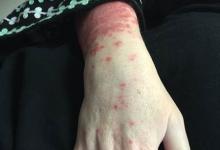Cancer risk in rheumatoid arthritis: anything new? Save

There is still a question I have a hard time answering with certainty when people living with rheumatoid arthritis ask me: Is there a higher risk of cancer that comes with the disease? Or with the treatments? So many confounding parameters, such as disease duration, disease state, disease activity come into play.
While older studies uncovered a 10-30% risk increase compared to the general population, mitigation of the risk with biologic disease modifying antirheumatic drugs (DMARDs) and better disease control have suggested improvement in risk, although this topic has come to the fore again with ORAL surveillance data suggesting an increased risk with JAK inhibition (JAKi). While screening the program, I spotted a promising session on the first day of EULAR exploring comorbidities in Rheumatoid Arthritis, in particular cancer and cardiovascular events. Here is my take from it.
In OP0065, Molina-Collada and colleagues propose a prospective cohort study from a multicenter national registry of targeted therapies looking at cancer (all except non-melanoma skin cancer (NMSC)) and NMSC (basal cell carcinoma and squamous cell carcinoma). Over 23 years and out of a total of 4,635 RA patients, 187 incident cancers were detected. When divided in groups according to treatment, and using TNFi as a reference, the adjusted overall HR for cancer excluding NMSC was 1.1 for IL6i, 0.8 for CD20i, 1.2 for JAKi, and 1.1 for CTLA4-A. The adjusted overall HR for NMSC was 0.5 for IL6i, 0.6 for CD20i, 0.6 for JAKi, and 1.1 for CTLA4-A. All confidence intervals were crossing 1, suggesting no significant risk increase for all cancer (excludind NMSC) and NMSC with any of the bDMARDs or tsDMARDs, in comparison to TNFi.
In OP0067, the authors have specifically focused on NMSC; aiming at clarifying the extent of risk increase linked to treatments with bio and tsDMARDs. Huss and colleagues also aimed at clarifying the extent of risk increase in people with past history of NMSC. Using data from a Nationwide cohort study of 21121 patients with RA who initiated a bioDMARD, they identified 94 incident NMSC with JAKi, 407 with non-TNFi, and 628 with TNFi. Compared to TNFi, the hazard ratio for NMSC with JAKi was 1.72 and 0.81 (ns) for non-TNFi. Among RA patients with a history of NMSC, with TNFi being the reference, the HR for a second NMSC was 2.76 for JAKi and 1.54 (ns) for non-TNFi; hereby supporting a higher incidence of a first ever NMSC, but also of a second NMSC in patients treated with JAKi compared to those treated with TNFi (with the caveat of low numbers in the recurrence group). This, in my opinion, reinforces the necessity for preventive skin examination in these populations, although this is not implemented in all healthcare systems.
On the topic of cancer recurrence, Westermann and colleagues investigated in OP0066 if treatment with bioDMARDs and specifically TNFi or rituximab was associated with an increased risk of cancer recurrence compared with patients with past history of solid cancer compared to those receiving csDMARDs. In this nationwide observational cohort study of Danish RA patients using the DANBIO register, 720 patients with past history of solid cancer were identified. The TNFi group had a markedly higher median time since primary cancer remission (4.9 years) which fits with RA management recommendations. The crude incidence rates for cancer recurrence were 11.9 per 1000 person years for patients treated with any bioDMARD, 11.6 for the TNFi treated group, 13.2 for the rituximab group and 13.8 for the csDMARD group. No significant increase in hazard ratios for cancer recurrence of any type or breast cancer recurrence specifically were observed in any of the bioDMARD exposure groups compared to csDMARDs groups, which is reassuring.
Another common question is whether people living with RA who develop cancer while treated with MTX or biologic display a worse prognosis. To answer this question, in OP0068, Suarez-Almazor and colleagues assessed survival in patients with RA and early-stage melanoma treated with methotrexate (MTX) or TNFi using the Surveillance, Epidemiology, and End Results (SEER) linked to Medicare database. 455 patients with RA and early melanoma were identified and no significant differences were observed in overall survival among RA regardless of their initial treatment regimen (No DMARD or csDMARDs < 6 months; MTX ≥6 months without bioDMARD; TNFi with or without csDMARD). The 5-year survival ranged from 71% to 84% respectively (p=0.07). On the other hand, mortality was significantly increased in patients who received glucocorticoids (GC) in the first year after melanoma diagnosis (mean prednisone-equivalent dose >7.5 mg/day). The study does not report adjustment on disease activity which could be confounding as a surrogate of higher inflammation in GC treated patients.










If you are a health practitioner, you may Login/Register to comment.
Due to the nature of these comment forums, only health practitioners are allowed to comment at this time.